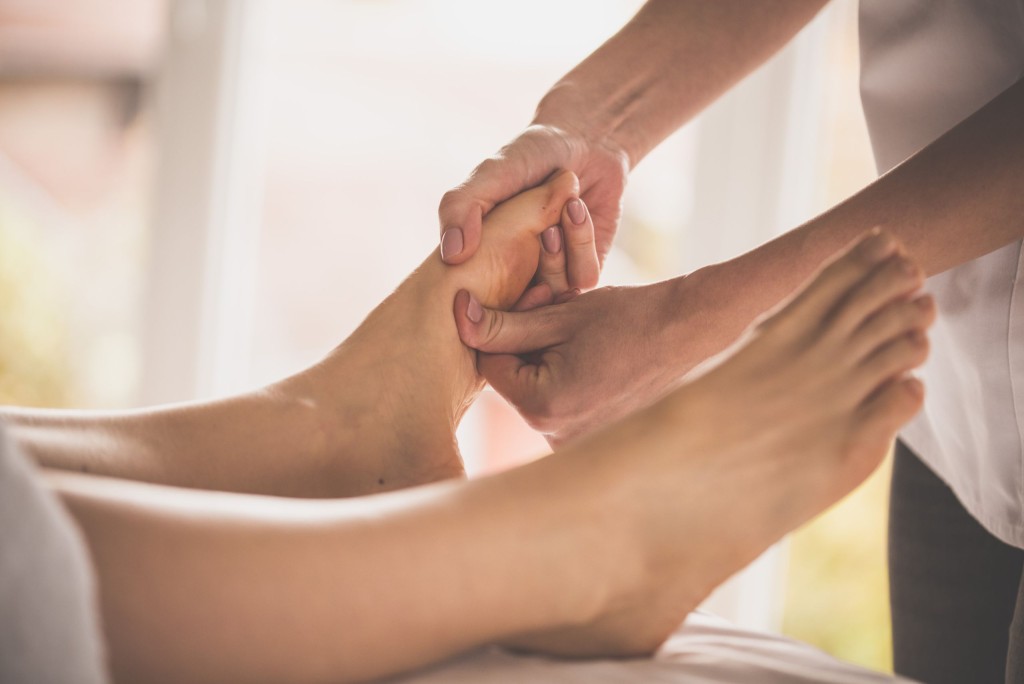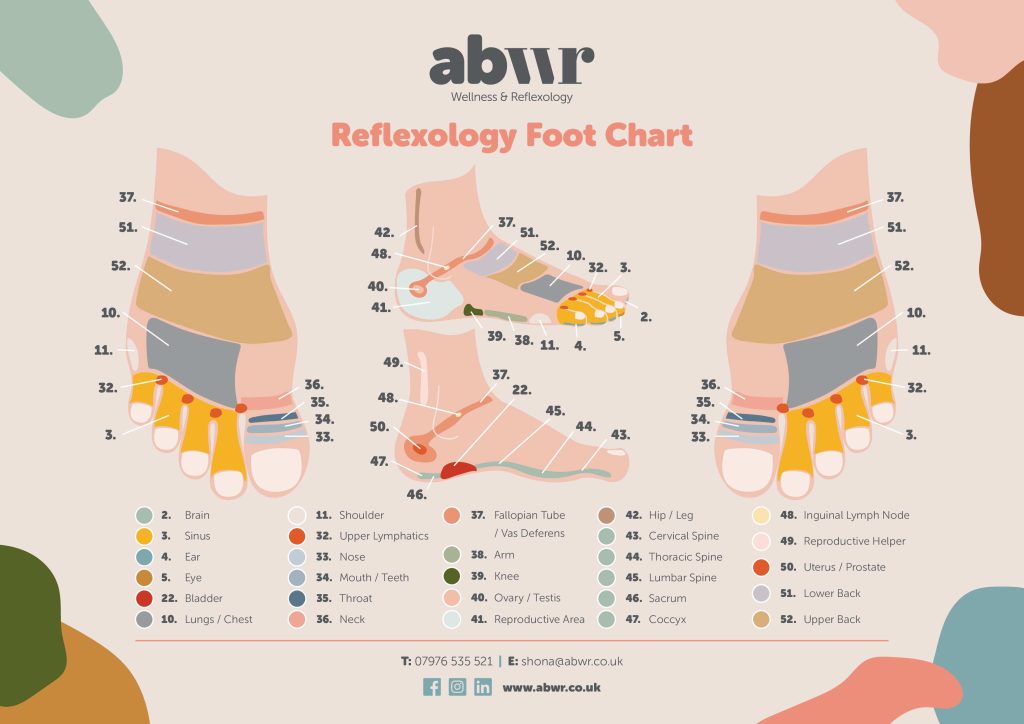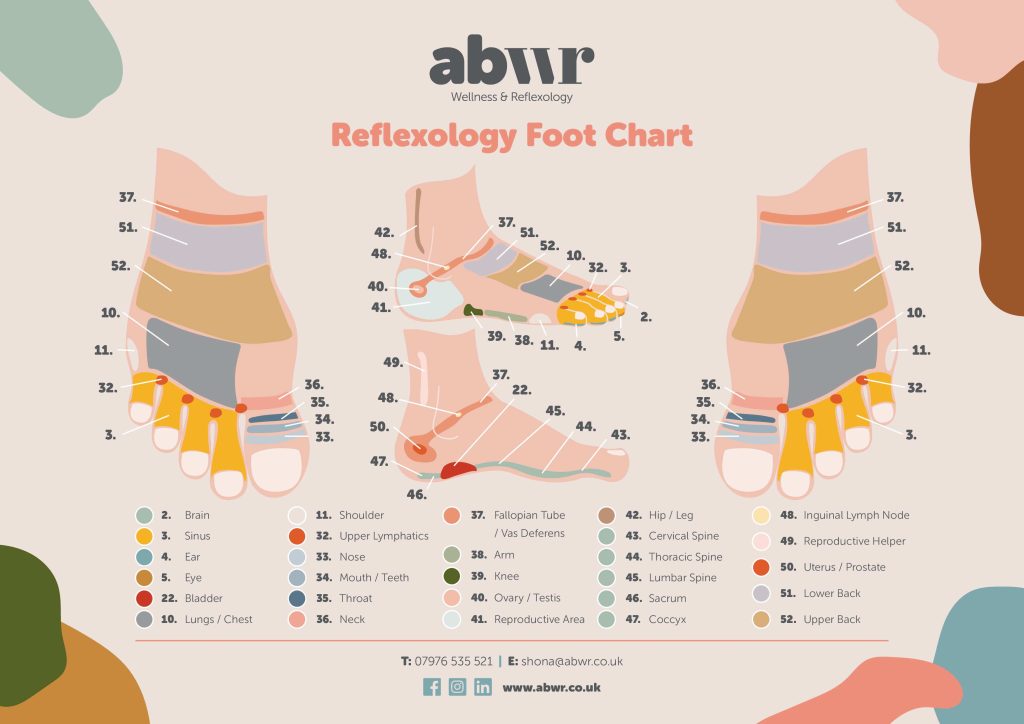
The Reflexology Map: How It Works
When you step into the treatment room for your first reflexology session with me, one of the first things you’ll likely hear me talk about is the reflexology “map” of the feet. It’s one of the most fascinating and powerful elements of reflexology – and I’m still always amazed by how the body responds when we work specific areas of the foot. So in this blog, I wanted to walk you through what this reflexology map actually is, how it works, and why it matters.
What is the Reflexology Map?
Reflexology is based on the theory that the feet (and hands, ears, and even face) mirror the entire body. On the feet alone, there are over 7,000 nerve endings – all connecting back to different parts of the body. Think of your feet like a mini map of you. The big toe relates to the head, the ball of the foot links to the heart, chest and lungs, the arch reflects digestive and urinary organs, and the heel connects to the lower back and pelvic area.
When I apply gentle pressure to specific points on your feet, I’m working with these “reflexes” to stimulate your body’s natural healing process and enhance your body’s natural energy flow. This helps to clear any blockages and supports your overall body by bringing it back into balance (homeostasis).
How Does the Map Work in Practice?
In every reflexology session, I use my reflex map as a guide – but it’s not a one-size-fits-all approach. Your feet tell a story. I’m always working intuitively, noticing areas of tension, congestion or sensitivity that might be connected to what’s going on in your body or mind.
For example:
- If you’ve been struggling with headaches, I’ll spend more time around the toes (head, eyes and sinus reflexes).
- If you’re feeling bloated or sluggish, I’ll work through the arch of the foot to support digestion.
- Feeling anxious or stressed? I’ll target the solar plexus reflex (centre of the foot) to calm your nervous system.
It’s all tailored to you. The map is a starting point – but the magic really happens when you combine knowledge with intuition.

Why Is It So Powerful?
What I love most about reflexology is how gentle it is, yet how powerful the effects can be. People often say things like:
“I can’t believe how relaxed I feel from just having my feet touched!”
“I slept like a baby after my session.”
“My headache completely lifted after you worked that spot.”
When we stimulate a reflex point, we’re encouraging energy to flow more freely through that part of the body. It’s like opening a blocked channel, helping your systems work more efficiently – whether that’s calming the nervous system, supporting hormone balance, or easing pain and tension.
A Few Common Reflex Points
Here are some key points I often work on in sessions:
- Big Toe – Brain, head, and pituitary gland
- Ball of the Foot – Heart, lungs and chest
- Arch – Liver, stomach, pancreas, small intestine
- Heel – Lower back, sciatic nerve, pelvic area
- Centre of Foot – Solar plexus (for deep relaxation)
And yes – both feet matter! Some organs are mirrored on both feet, while others (like the liver and spleen) are specific to the left or right foot.

A Final Thought
The reflexology map is more than just a diagram. It’s a gateway to understanding your body on a deeper level. Every session is a chance to tune in, reset and reconnect with yourself.
Whether you’re coming in for stress relief, hormone support, digestive issues or just some much-needed downtime, reflexology can meet you where you are. Your feet are more than just something you walk on – they’re the foundation of your wellbeing.
If you’ve never experienced reflexology before, I’d love to welcome you into our calm, cosy space here at ABWR. And if you’re a regular, you know how powerful those pressure points can be. Ready to explore your own reflexology map? Book your next appointment here.